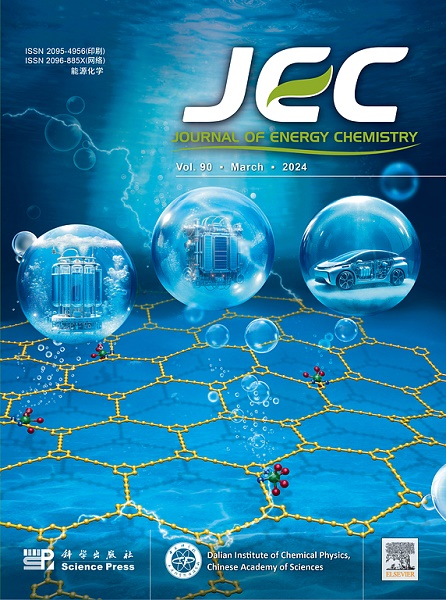Grain boundary engineering on Cu-based electrocatalysts promotes nitrate reduction to ammonia production
IF 13.1
1区 化学
Q1 Energy
引用次数: 0
Abstract
Cu-based electrocatalysts derived from copper oxide exhibit good electrocatalytic activity and selectivity in the electrocatalytic nitrate reduction reaction (NO3 RR). However, the origin of the enhanced selectivity and activity of NO3RR is unclear. Herein, we investigate the activity of three copper oxide/hydroxide-derived catalysts, and verify the phase changes during the reduction process through electrochemical in situ Raman spectroscopy. Our results show that all phases ultimately transform into metallic copper during the electrochemical synthesis process, supporting that the zero valent copper phase is the actual active phase. The high-density grain boundaries and defects are responsible for the activity of NO3RR. By combining with the nickel oxide, the selectivity of the catalyst for NO3RR can be further improved, achieving an ammonia Faradaic efficiency of ∼96% and an ammonia yield of 3.2 mmol cm−2 h−1 at −0.05 VRHE. This experimental design of oxygen intercalation/elimination brings a more flexible electrode, which provides a new methodology for constructing the grain boundary toward NO3RR.

求助全文
约1分钟内获得全文
求助全文
来源期刊

Journal of Energy Chemistry
CHEMISTRY, APPLIED-CHEMISTRY, PHYSICAL
CiteScore
19.10
自引率
8.40%
发文量
3631
审稿时长
15 days
期刊介绍:
The Journal of Energy Chemistry, the official publication of Science Press and the Dalian Institute of Chemical Physics, Chinese Academy of Sciences, serves as a platform for reporting creative research and innovative applications in energy chemistry. It mainly reports on creative researches and innovative applications of chemical conversions of fossil energy, carbon dioxide, electrochemical energy and hydrogen energy, as well as the conversions of biomass and solar energy related with chemical issues to promote academic exchanges in the field of energy chemistry and to accelerate the exploration, research and development of energy science and technologies.
This journal focuses on original research papers covering various topics within energy chemistry worldwide, including:
Optimized utilization of fossil energy
Hydrogen energy
Conversion and storage of electrochemical energy
Capture, storage, and chemical conversion of carbon dioxide
Materials and nanotechnologies for energy conversion and storage
Chemistry in biomass conversion
Chemistry in the utilization of solar energy
 求助内容:
求助内容: 应助结果提醒方式:
应助结果提醒方式:


